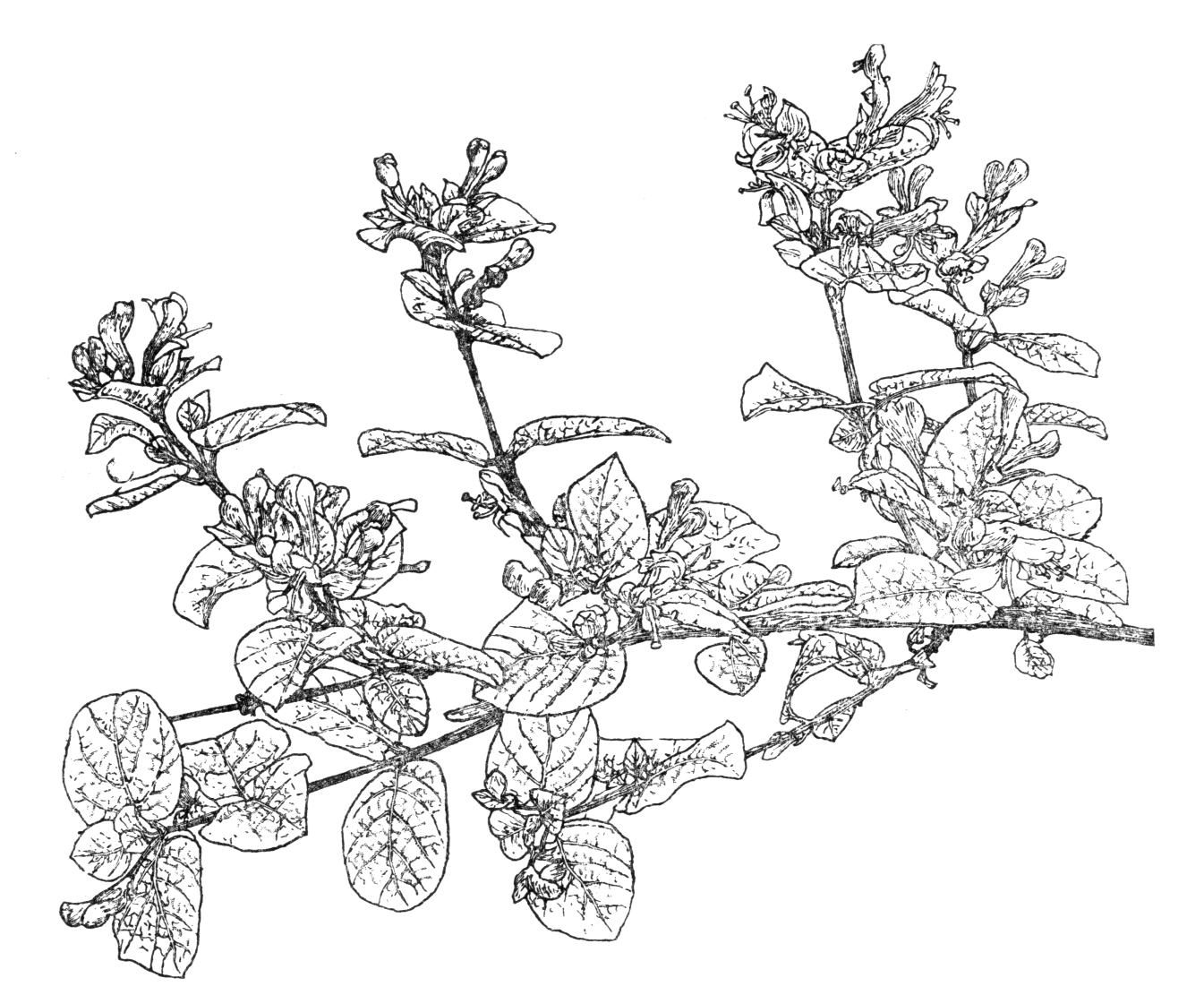Lonicera iberica
Credits
Article from Bean's Trees and Shrubs Hardy in the British Isles
Recommended citation
'Lonicera iberica' from the website Trees and Shrubs Online (treesandshrubsonline.
Genus
Other taxa in genus
- Lonicera albertii
- Lonicera alpigena
- Lonicera alseuosmoides
- Lonicera altmannii
- Lonicera × americana
- Lonicera angustifolia
- Lonicera × brownii
- Lonicera caerulea
- Lonicera caprifolium
- Lonicera caucasica
- Lonicera chaetocarpa
- Lonicera chrysantha
- Lonicera ciliosa
- Lonicera deflexicalyx
- Lonicera dioica
- Lonicera etrusca
- Lonicera ferdinandii
- Lonicera flava
- Lonicera fragrantissima
- Lonicera giraldii
- Lonicera griffithii
- Lonicera gynochlamydea
- Lonicera × heckrottii
- Lonicera henryi
- Lonicera hildebrandiana
- Lonicera hirsuta
- Lonicera hispida
- Lonicera implexa
- Lonicera japonica
- Lonicera korolkowii
- Lonicera ledebourii
- Lonicera maackii
- Lonicera maximowiczii
- Lonicera microphylla
- Lonicera morrowii
- Lonicera myrtillus
- Lonicera nervosa
- Lonicera nigra
- Lonicera nitida
- Lonicera periclymenum
- Lonicera pileata
- Lonicera prolifera
- Lonicera prostrata
- Lonicera purpurascens
- Lonicera × purpusii
- Lonicera pyrenaica
- Lonicera quinquelocularis
- Lonicera rupicola
- Lonicera ruprechtiana
- Lonicera sempervirens
- Lonicera setifera
- Lonicera similis
- Lonicera splendida
- Lonicera standishii
- Lonicera syringantha
- Lonicera tangutica
- Lonicera tatarica
- Lonicera tatsienensis
- Lonicera × tellmanniana
- Lonicera thibetica
- Lonicera tomentella
- Lonicera tragophylla
- Lonicera trichosantha
- Lonicera xylosteum
- Lonicera yunnanensis
A deciduous shrub of dense, bushy, rounded habit, up to 10 ft high and 12 ft through; young shoots hairy. Leaves mostly heart-shaped, sometimes roundish, the apex scarcely pointed, dark dull green above, grey beneath, both surfaces downy. On the vigorous barren shoots some of the leaves are 2 in. long and nearly as much wide; on the flowering branchlets they are mostly 1⁄2 to 1 in. long; stalk 1⁄8 to 1⁄3 in. long. Flowers produced in pairs from the end and upper leaf-axils of short shoots; corolla two-lipped, 3⁄4 in. long and the same wide, pale yellow, not fragrant, downy outside, the tube curved and about as long as the slightly lobed limb. Bracts like the leaves but ovate, and 1⁄4 to 1⁄2 in. long; flower-stalk very short.
Native of the Caucasus, Persia, etc.; introduced in 1824. A very robust shrub of neat habit, free-flowering without being showy. Botanically, it is distinguished by the bractlets coalescing into a cup-shaped organ enveloping the two ovaries, which, however, grow out of the cup and develop into bright red berries which are very attractive.

